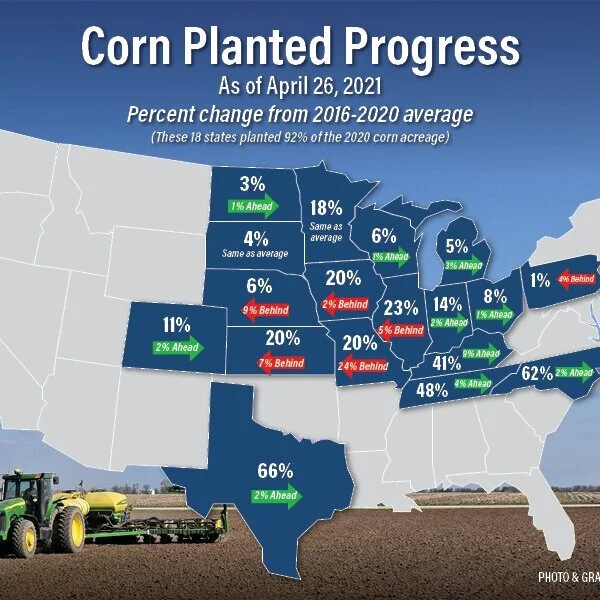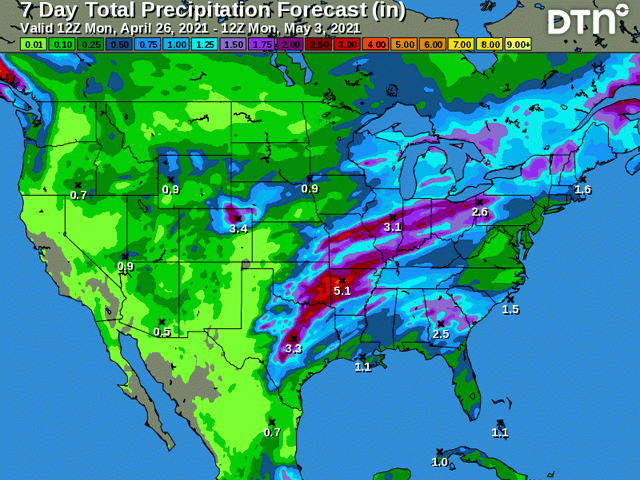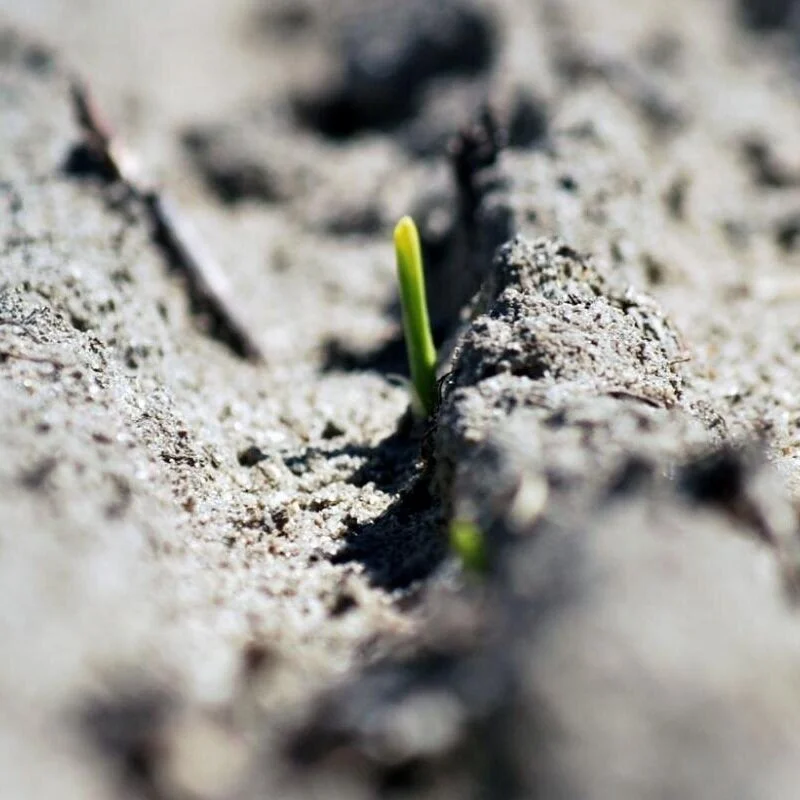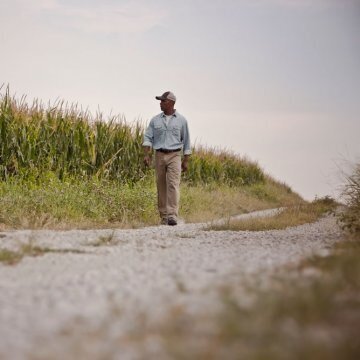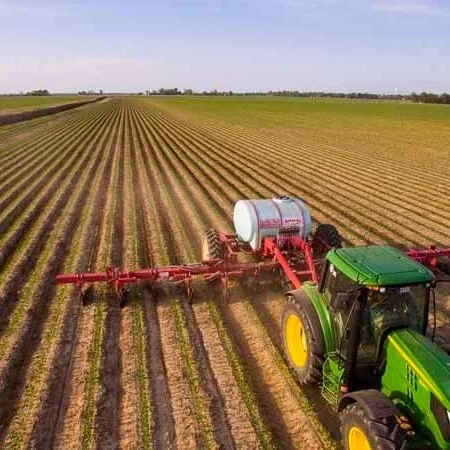With recent rallies in May 2021 futures, the price for a nearby corn contract soared to the highest level since June 2013. A combination of fundamental factors has fueled the recent surge including strong ethanol margins, record U.S. corn exports and ongoing dry weather in key corn growing areas of Brazil.
Read MoreUp. Up. Up. May 2021 corn futures topped $7 per bushel on April 27. A look at the corn price chart shows a dramatic and consistent climb higher. You can find multi-year highs in many ag commodities.
“These are one of those times that come along generally once every 30 years or so when the markets just really take off,” says Arlan Suderman, StoneX chief commodities economist. “And we just went through this about 12 years ago or so.”
Read MoreSeptember rice futures continued higher this week along with the rest of the CBOT grains. The graphs below illustrate the price trends for the major grains since March 30, 2021. New crop corn, wheat, and soybeans have all added over $1/bu following the NASS Prospective Plantings report released on March 31.
Recall the findings from the survey resulted in limit moves higher in corn and soybeans. Corn futures have caught fire this month as estimates of Brazil’s production continue to fall. From a relative price standpoint, soybeans are losing the acreage battle to corn.
Read MoreA review and forecast of the U.S. crop weather scene begins with the impact of the cold snap during the April 21-27 week. That cold event certainly left its mark. Winter wheat in either good or excellent condition declined by four percentage points overall from the previous week to 49% rated good to excellent compared with 53% the previous week. Oklahoma and Texas showed declines in the good-to-excellent totals of 9 percentage points in Oklahoma (70% to 61%) and 10 points in Texas (28% to 18%). In addition, corn planting was slowed by the cold outbreak. Planting did advance 9 percentage points to 17% complete, but fell behind the average pace of 20%.
While corn and soybean prices continue to march higher, farmers are making progress getting the 2021 crop in the ground. The latest estimates from USDA show soybean planting progress jumped from 3% to 8% in the past week, which is trending 3% ahead of the five-year average. Around 3% of the soybean crop has emerged, which is 1% ahead of last week. Louisiana trails in planting progress, but the other key soybean production states are tracking with the five-year average or even a bit ahead.
Read MoreBloomberg writers Kim Chipman and Michael Hirtzer reported on Wednesday that, “Corn prices climbed above $6 a bushel to the loftiest level in almost eight years after the U.S. said it expects China to buy an all-time high amount of the grain off global markets.
Read MoreWeed management is a year-round job, but producers take special care to make sound management decisions prior to planting—including cover crop burndown.
David Russell, an Alabama Extension weed scientist, offers suggestions for planting into a weed-free field and maintaining a clean corn crop throughout the growing season. Russell’s areas of specialization include corn, soybeans, small grains, forages and non-crops.
Read MoreA drier-than-usual year up north has Baton Rouge-area farmers and communities along the Mississippi River breathing a sigh of relief as the threat of flooding due to high water levels may not be a significant headache this year.
The river in Baton Rouge appears to have crested last week at about 38 feet, just over what’s considered a moderate flood stage. The National Weather Service projects waters will gradually continue to fall and could even reach minor flood stages by early next week, even with this week's rains.
Read MoreBy a wide margin, soybeans are the most valuable U.S. farm export, accounting for 18¢ of every $1 in sales during calendar 2020, said the USDA’s Foreign Agricultural Service on Wednesday. Corn, the country’s most widely grown crop, was second in export value to soybeans, which were worth a record $25.7 billion compared with $9.2 billion for corn.
Read MoreUSDA on Friday lowered corn ending stocks for the 2020-21 by 150 million bushels (mb) to 1.352 billion bushels (bb) but held pat with soybean ending stocks at 120 mb.
USDA raised corn use for feed, seed and industrial use, as well as exports to drop the ending stocks for the crop.
Read MoreAny change in capital gains tax policy that eliminates or scales back stepped-up basis could result in a massive tax burden on the agricultural sector according to new analysis by the American Soybean Association and the American Farm Bureau Federation.
To minimize the impact of burdensome capital gains taxes, farmers and ranchers use stepped-up basis, which provides a reset for the asset value basis during intergenerational transfers. The magnitude of the tax burden that would be felt if basis is taken away or reduced would likely significantly exceed the annual income generated by the assets, something that has soy and other American farmers concerned.
Read MoreLouisiana Prospective Plantings Report, March, 2021
Read MoreTo understand the weather challenges of growing crops in the Blacklands of North Carolina, the story of both a hurricane and tornado that did in the grain facility of Green Valley Farms near Columbia in Tyrell County fits the bill perfectly.
Read MoreWet weather has stopped Louisiana farmers from finishing this year’s corn planting, but not before they got the majority of the crop in the ground. LSU AgCenter reporter Craig Gautreaux has this report from northeast Louisiana.
Read MoreAs the acreage battle continues to play out, a Pro Farmer member survey shows better commodity prices are attracting more acres this year.
The Pro Farmer/Doane survey revealed farmers plan to plant more acres, with total area planted to crops in the U.S. expected to rise to 319.4 million acres. That would be up nearly 3%, or 8.9 million acres, from 2020. If the survey findings hold true, it also means U.S. acreage will hit the highest level since 2018.
Read More

